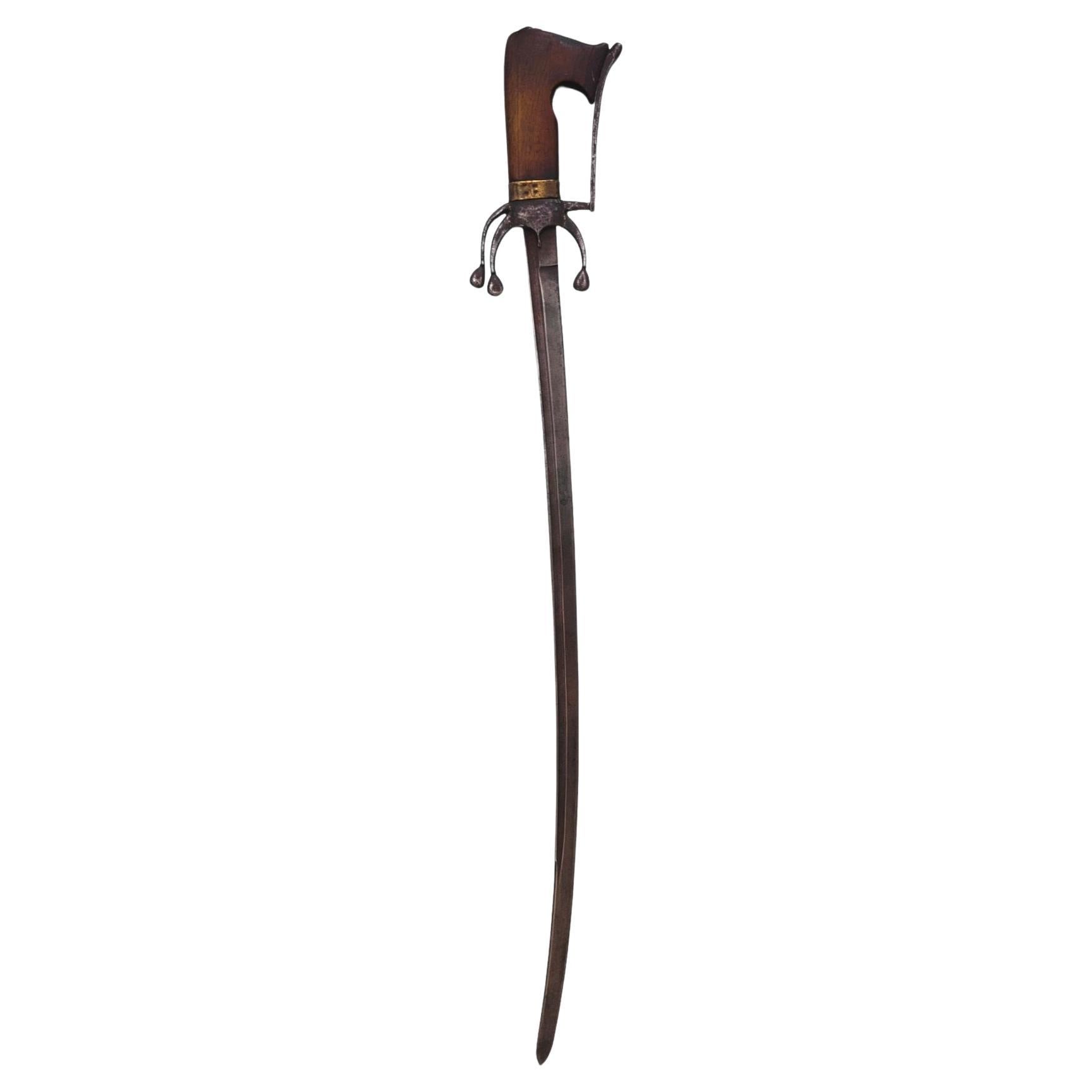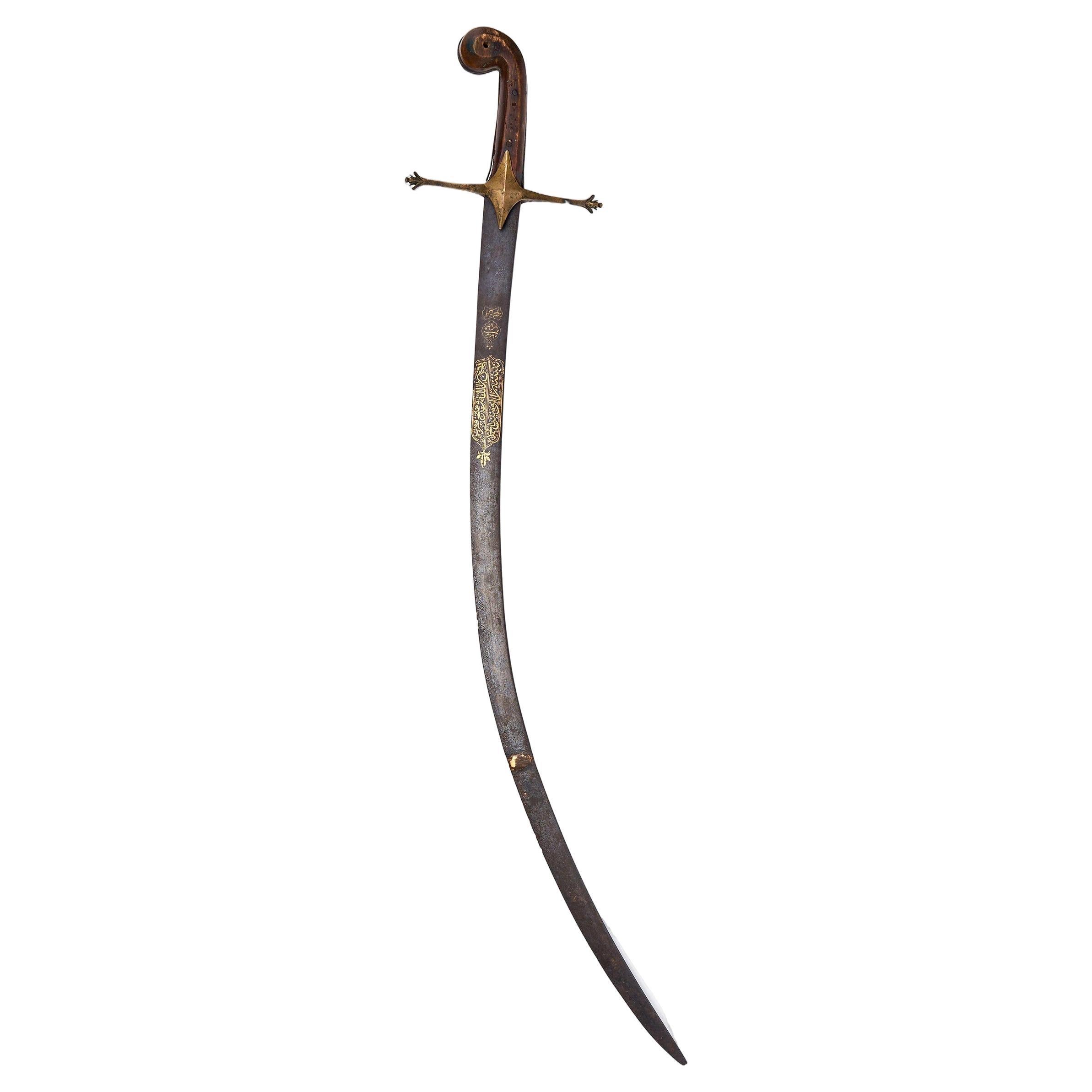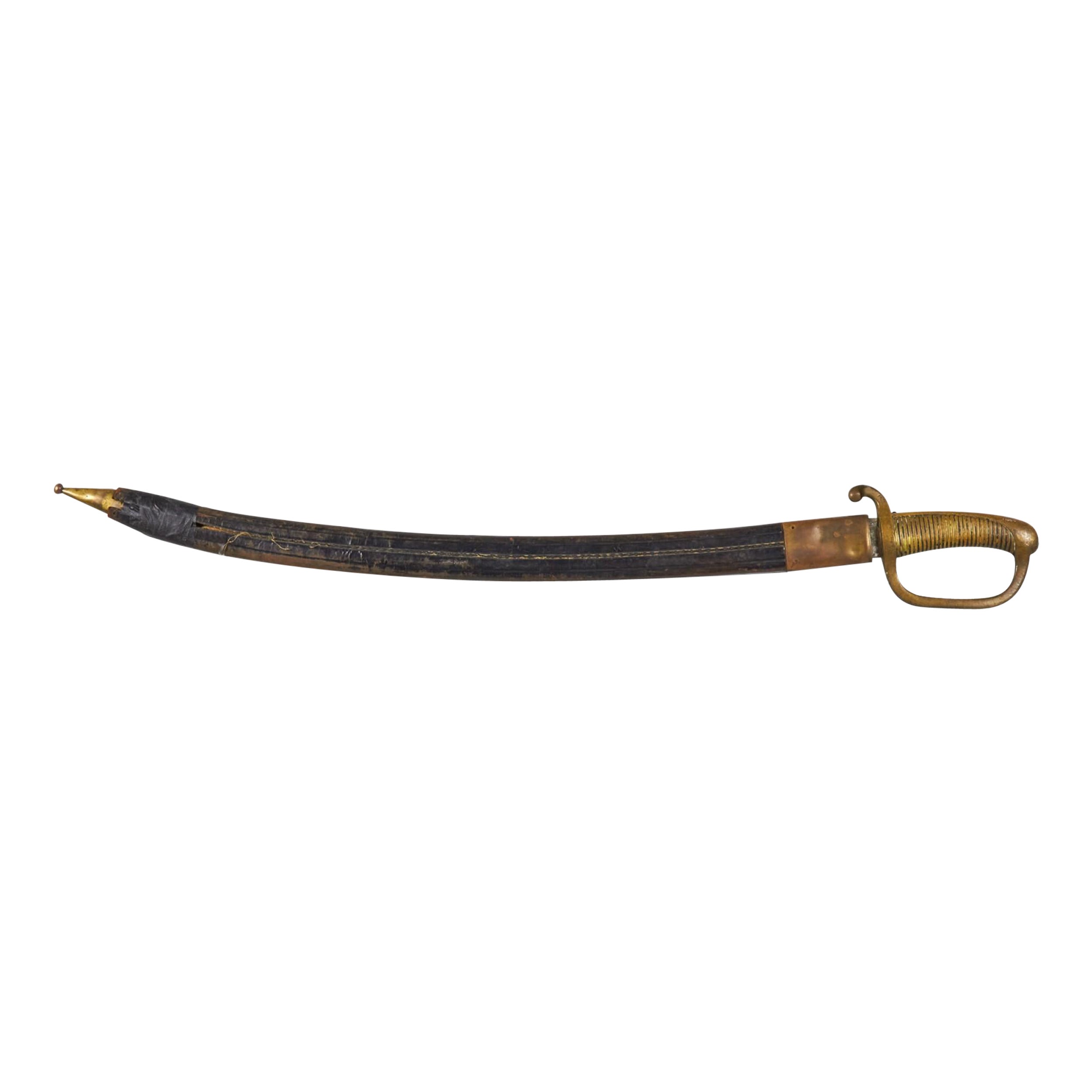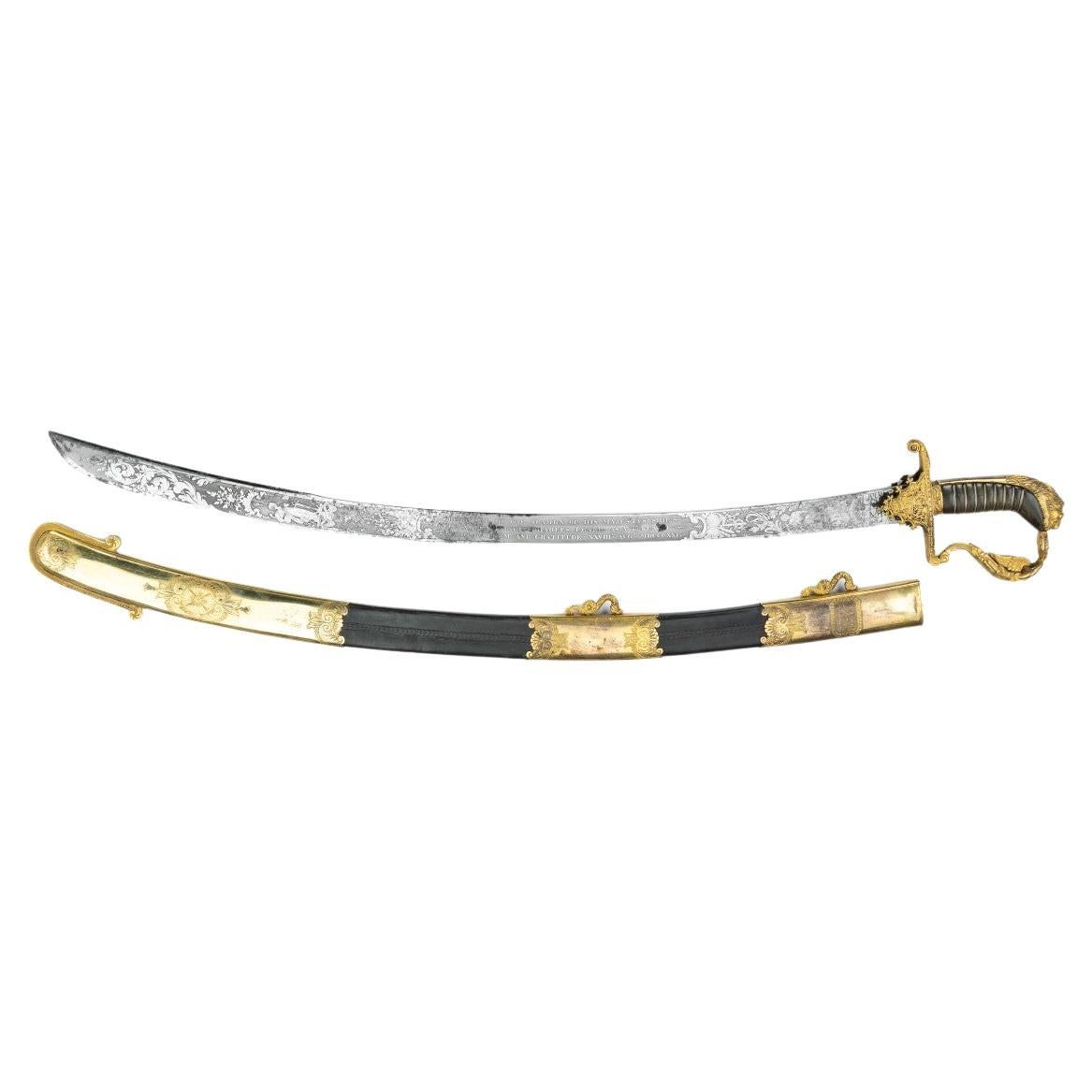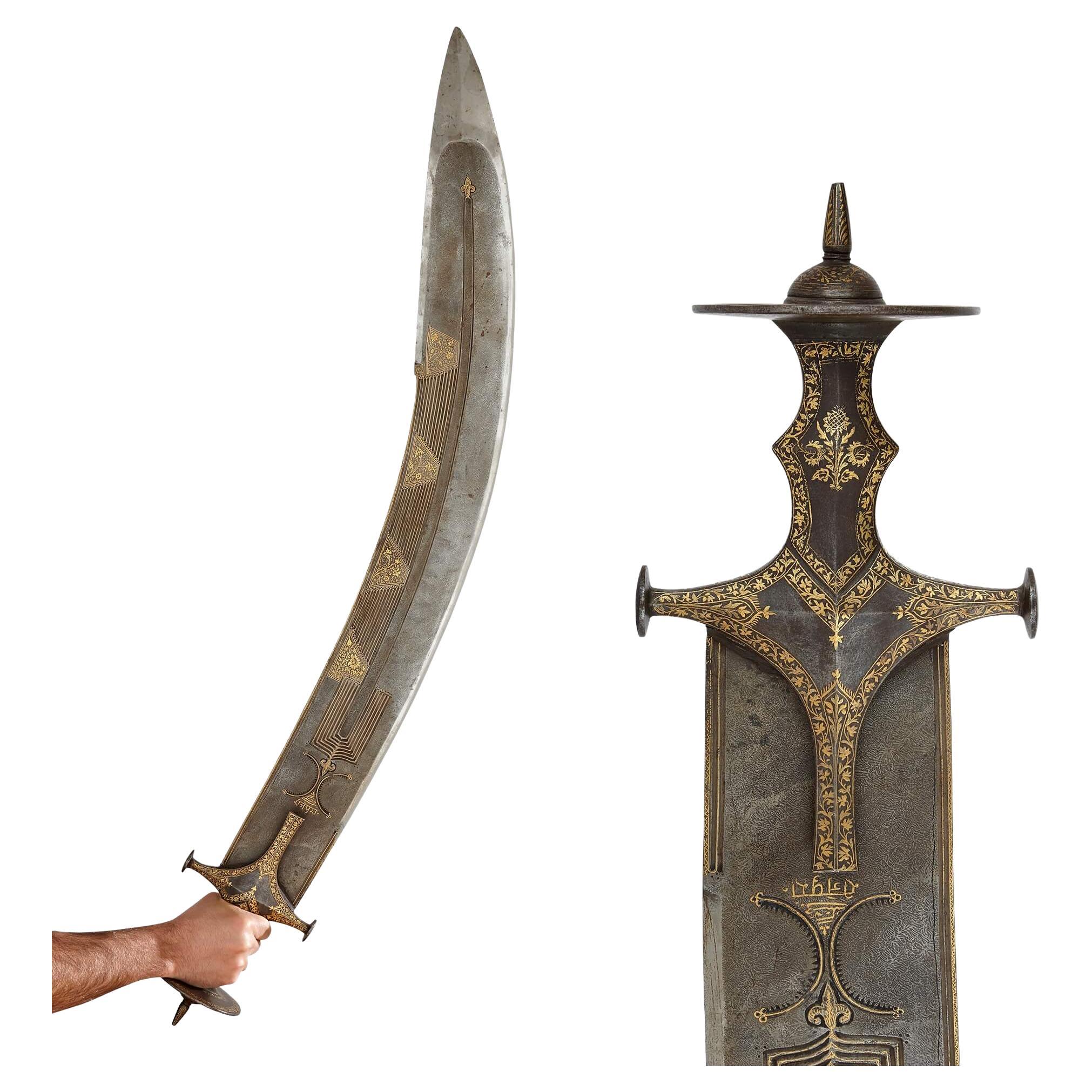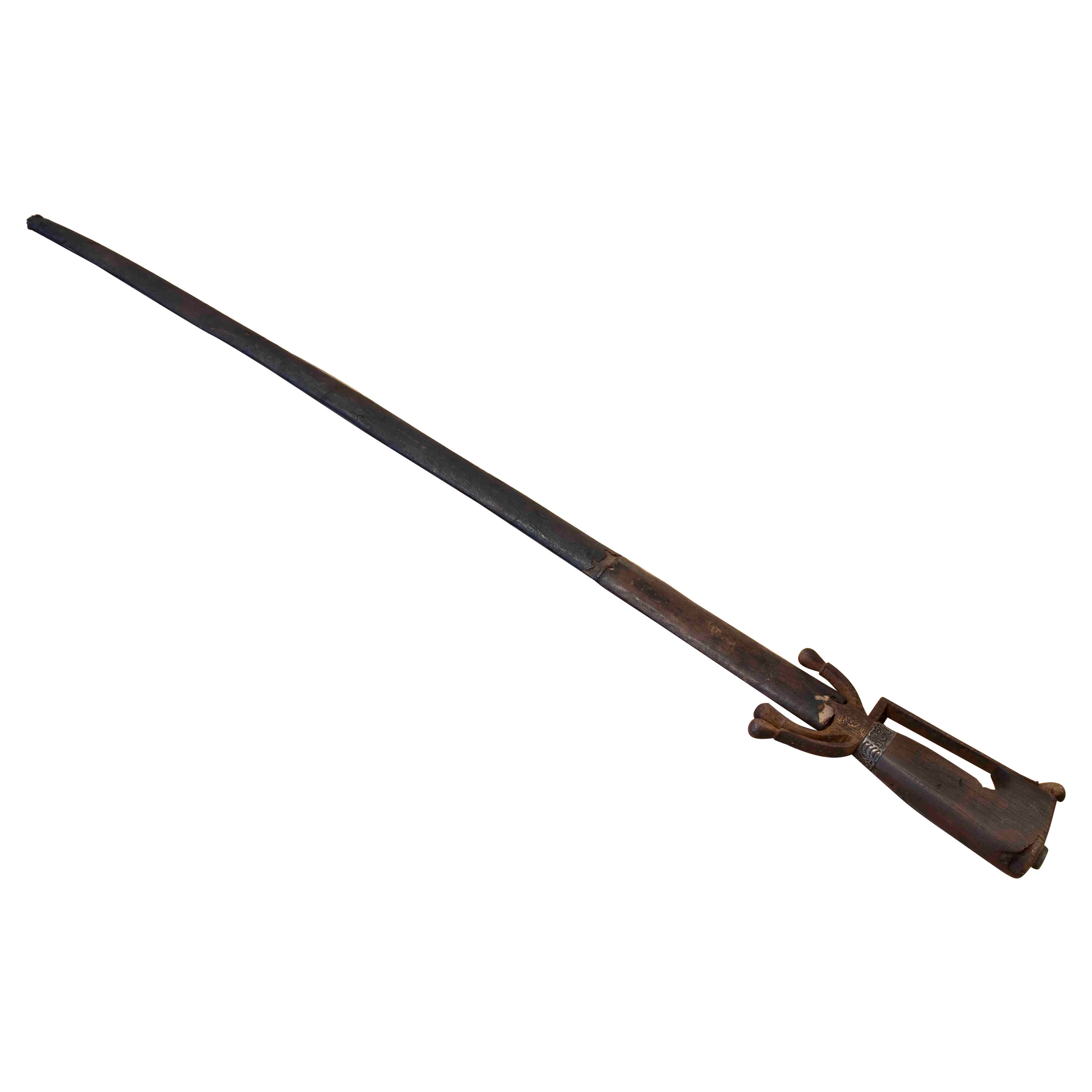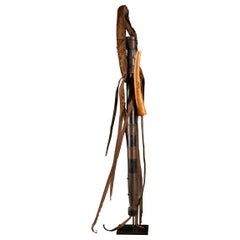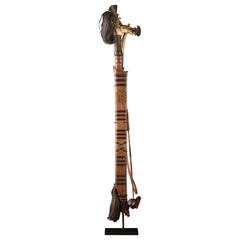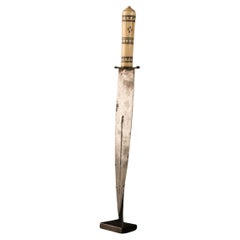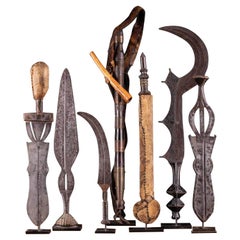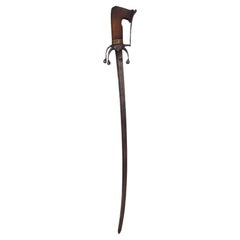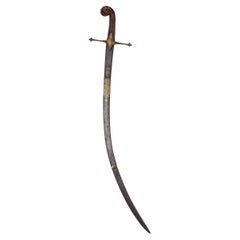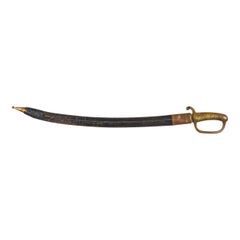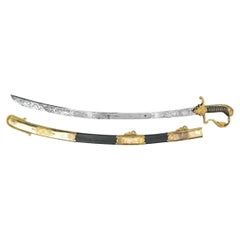Items Similar to Sword and its scabbard-Diplomatic gift from Negus Menelik II Emperor of Ethiopia
Want more images or videos?
Request additional images or videos from the seller
1 of 10
Sword and its scabbard-Diplomatic gift from Negus Menelik II Emperor of Ethiopia
$27,499.16
£20,357.68
€23,000
CA$38,051.96
A$41,951.42
CHF 21,947.63
MX$514,666.01
NOK 276,277.18
SEK 258,362.85
DKK 175,199.89
About the Item
This prestige weapon was commissioned by Emperor Menelik II of Ethiopia as a diplomatic gift for the renowned French Armenian merchant and honorary French envoy Matig Kevorkoff, a prominent tobacco magnate based in Ethiopia. Kevorkoff, who had first settled in Harar before establishing himself in Addis Ababa—the capital founded by Menelik II—played a significant role in fostering trade and diplomacy between France and Ethiopia.
True to Menelik II's iconic imagery, the blade features an engraved profile of the emperor, faithful to his official portraits. Below a decorative plant frieze on the curved blade, an inscription in Ge'ez, the liturgical language of the Ethiopian and Eritrean Orthodox Church, reads:
"Ethiopia stretches her hands to God."
The blade also bears a European count's crown and the inscription acknowledging its receiver:
"M. KÉVORKOFF & CO HARRAR."
The weapon's handle, crafted from horn, is adorned with a Maria Theresa thaler, adding to its intricate design and cultural significance.
Menelik II: A Brief Biography
Menelik II (August 17, 1844 – December 12, 1913) was one of Ethiopia’s greatest rulers. Initially king of Shewa (1865–1889), he ascended to the imperial throne in 1889, expanding the Ethiopian Empire nearly to its current borders. His reign is celebrated for modernizing Ethiopia and securing its sovereignty by defeating an Italian invasion at the Battle of Adwa in 1896.
Born to Haile Malakot, the Negus (king) of Shewa, and a court servant, Menelik claimed descent from the Solomonid dynasty through his paternal lineage. As a young man, he was captured by Emperor Tewodros II and held in Amba Magdala for nearly a decade. During this time, he witnessed Tewodros’s reform efforts and heavy-handed methods, which ultimately led to the emperor’s downfall.
After escaping captivity in 1865, Menelik returned to Shewa, where he deposed the appointed ruler and declared himself Negus. Renowned for his diplomacy and military acumen, Menelik expanded his territory to include Arusi, Harar, Jima, and several southern kingdoms. In 1889, he claimed the imperial crown following the death of Emperor Yohannes IV.
A dispute with Italy over the Treaty of Wichale culminated in the Battle of Adwa, where Ethiopian forces decisively defeated the Italians, cementing Ethiopia’s sovereignty and elevating Menelik’s international status. Post-Adwa, Menelik modernized Ethiopia, establishing ministries, schools, communication systems, and railways. However, a series of strokes from 1906 onwards diminished his role, leading to his death in 1913.
Matig Kevorkoff: The Diplomatic Merchant
Born in Üsküdar (near Constantinople) in 1867, Matig Kevorkoff received an education at the Hagop Kurken Armenian College. After brief stays in Egypt and Djibouti, he established a successful trading company in 1896, importing goods such as textiles, beverages, and building materials into Ethiopia. His monopoly on Ethiopia’s tobacco trade became the cornerstone of his wealth.
Kevorkoff, a French citizen, was deeply integrated into Ethiopian society. He served as an honorary French representative and later as the Armenian Republic's plenipotentiary ambassador to Ethiopia. Recognized for his contributions, Kevorkoff was among the first administrators of the Bank of Ethiopia and was decorated multiple times by the Ethiopian government. In 1927, he was elected president of the Armenian community in Ethiopia, solidifying his legacy as a cultural and diplomatic bridge between nations.
- Dimensions:Height: 35.83 in (91 cm)Width: 5.91 in (15 cm)Depth: 2.37 in (6 cm)
- Materials and Techniques:
- Place of Origin:Ethiopia
- Period:
- Date of Manufacture:1890
- Condition:Wear consistent with age and use. Minor losses.
- Seller Location:Leuven , BE
- Reference Number:1stDibs: LU3301142529942
About the Seller
5.0
Vetted Professional Seller
Every seller passes strict standards for authenticity and reliability
Established in 2017
1stDibs seller since 2017
172 sales on 1stDibs
Typical response time: 4 hours
- ShippingRetrieving quote...Shipping from: Leuven , Belgium
- Return Policy
Authenticity Guarantee
In the unlikely event there’s an issue with an item’s authenticity, contact us within 1 year for a full refund. DetailsMoney-Back Guarantee
If your item is not as described, is damaged in transit, or does not arrive, contact us within 7 days for a full refund. Details24-Hour Cancellation
You have a 24-hour grace period in which to reconsider your purchase, with no questions asked.Vetted Professional Sellers
Our world-class sellers must adhere to strict standards for service and quality, maintaining the integrity of our listings.Price-Match Guarantee
If you find that a seller listed the same item for a lower price elsewhere, we’ll match it.Trusted Global Delivery
Our best-in-class carrier network provides specialized shipping options worldwide, including custom delivery.More From This Seller
View AllShi People, DRC, Ceremonial Sword
Located in Leuven , BE
The Shi are an ethnic group located in the eastern part of the Democratic Republic of the Congo, (Zaire), mainly located in the South Kivu province. This old sword...
Category
Early 20th Century Congolese Arms, Armor and Weapons
Materials
Steel
Traditional Tribal Mandau (Parang Ilang) Sword – Dayak People, Borneo
Located in Leuven , BE
Traditional Tribal Mandau (Parang Ilang) Sword – Dayak People, Borneo
The Mandau is a traditional sword of the Dayak people of Borneo, revered both as a cultural artifact and a weap...
Category
Early 20th Century Indonesian Antiquities
Materials
Metal
Haussa People, Nigeria, Dagger with Organic Handle
Located in Leuven , BE
Beautifully crafted dager from Nigeria (Haussa People) with an organic handle.
Hausa people are frond in northwestern Nigeria and adjacent southern Ni...
Category
20th Century Nigerian Tribal Art
Materials
Metal
Selection of Authentic Kongo Knives
Located in Leuven , BE
The knives were handmade with heavily decorated Forged Iron blades with embellished wooden handles. They would use brass or leather wrappings and tacks that turned their weapons into...
Category
Vintage 1930s Congolese Antiquities
Materials
Metal
$12,434 / set
Yombe Chief Staff "Mwaala", Publ: Kongo Art Magique, Yann Ferrandin, Paris 2009.
Located in Leuven , BE
A Wooden Yombe Mwaala Chief Staff, with three globular elements. The Finial is a finely carved female figure kneeling, the hands resting on the knees and with raised scarification ma...
Category
Early 20th Century Congolese Natural Specimens
Materials
Hardwood
Ethno Design Pair of Early Native Tribal Ceremonial Decorated Adze Tools
Located in Leuven , BE
An adze is a cutting tool similar to an axe but with a cutting edge perpendicular to the handle rather than parallel. Toraja people from Sumatra Island, used for wood carving, were made from nephrite (also known as jade) in the South Island. In the North Island they were commonly made from greywacke or basalt. At the same time on Henderson Island, a small coral island...
Category
20th Century Oceanic Mounted Objects
Materials
Wood
You May Also Like
North African Sword (Nimcha), Morocco, Early 19th Century
Located in Madrid, ES
North African Sword (Nimcha), Morocco, Early 19th Century
This North African sword, known as a "Nimcha," is a remarkable piece originating from Morocco, dating back to the early 19th...
Category
Antique Late 19th Century Arms, Armor and Weapons
Materials
Wrought Iron
A Jawhar Sword With Calligraphy, By Asad Allah, Period Of Shah Abbas
Located in London, GB
A beautiful Persian sword crafted by Asad Allah in the 17th century during the reign of Shah Abbas.
translate: Victory from God and conquest is near, an...
Category
Antique 17th Century Asian Arms, Armor and Weapons
Materials
Steel
English Renaissance Curved Brass Sword and Leather Scabbard
Located in Queens, NY
English Renaissance (19th Century) curved sword with brass fluted handle and black leather scabbard.
Condition: Good; Minor losses
Category
Antique 19th Century British Renaissance Arms, Armor and Weapons
Materials
Brass
Fine Presentation Sword Given to Lieutenant Charles Peake
Located in Lymington, Hampshire
A fine presentation sword given to Lieutenant Charles Peake as a token of gratitude by the Men of His Ship when recommissioned for Foreign Service i...
Category
Antique 1820s English Arms, Armor and Weapons
Materials
Metal
Large Indian Gold Damascened Steel Tegha Sword
Located in London, GB
Large Indian gold damascened steel tegha sword.
Indian, c. 1850
Length 112cm, width 16cm, depth 10cm
This remarkable sword is a tegha, a large Indian sword...
Category
Antique Mid-19th Century Indian Arms, Armor and Weapons
Materials
Gold, Steel
Sword with Wrought Iron Blade with Traces of Gold on Hilt with Cover Sheath
Located in Marbella, ES
Sword with Wrought Iron Blade with Traces of Gold on Hilt with Leather Cover Sheath
Category
Antique 17th Century Arms, Armor and Weapons
Materials
Gold, Wrought Iron
